The Sandy Bridge Review: Intel Core i7-2600K, i5-2500K and Core i3-2100 Tested
by Anand Lal Shimpi on January 3, 2011 12:01 AM ESTThe 6-series Platform
At launch Intel is offering two chipset families for Sandy Bridge: P-series and H-series, just like with Lynnfield. The high level differentiation is easy to understand: P-series doesn’t support processor graphics, H-series does.
There are other differences as well. The P67 chipset supports 2x8 CrossFire and SLI while H67 only supports a single x16 slot off of the SNB CPU (the chip has 16 PCIe 2.0 lanes that stem from it).
While H67 allows for memory and graphics overclocking, it doesn’t support any amount of processor overclocking. If you want to overclock your Sandy Bridge, you need a P67 motherboard.
6Gbps
Had SSDs not arrived when they did, I wouldn’t have cared about faster SATA speeds. That’s how it worked after all in the evolution of the hard drive. We’d get a faster ATA or SATA protocol, and nothing would really change. Sure we’d eventually get a drive that could take advantage of more bandwidth, but it was a sluggish evolution that just wasn’t exciting.
SSDs definitely changed all of that. Today there’s only a single 6Gbps consumer SSD on the market—Crucial’s RealSSD C300. By the middle of the year we’ll have at least two more high-end offerings, including SandForce’s SF-2000. All of these SSDs will be able to fully saturate a 3Gbps SATA interface in real world scenarios.
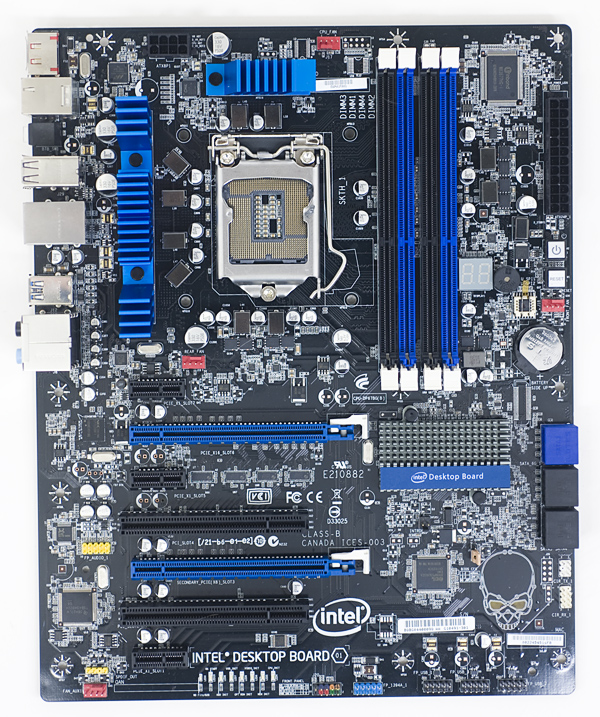
Intel's DP67BG—The blue SATA ports on the right are 6Gbps, the black ones are 3Gbps
To meet the soon to be growing need for 6Gbps SATA ports Intel outfits the 6-series PCH with two 6Gbps SATA ports in addition to its four 3Gbps SATA ports.
I dusted off my 128GB RealSSD C300 and ran it through a bunch of tests on five different platforms: Intel’s X58 (3Gbps), Intel’s P67 (3Gbps and 6Gbps), AMD’s 890GX (6Gbps) and Intel’s X58 with a Marvell 9128 6Gbps SATA controller. The Marvell 91xx controller is what you’ll find on most 5-series motherboards with 6Gbps SATA support.
I ran sequential read/write and random read/write tests, at a queue depth of 32 to really stress the limits of each chipset’s SATA protocol implementation. I ran the sequential tests for a minute straight and the random tests for three minutes. I tested a multitude of block sizes ranging from 512-bytes all the way up to 32KB. All transfers were 4KB aligned to simulate access in a modern OS. Each benchmark started at LBA 0 and was allowed to use the entire LBA space for accesses. The SSD was TRIMed between runs involving writes.
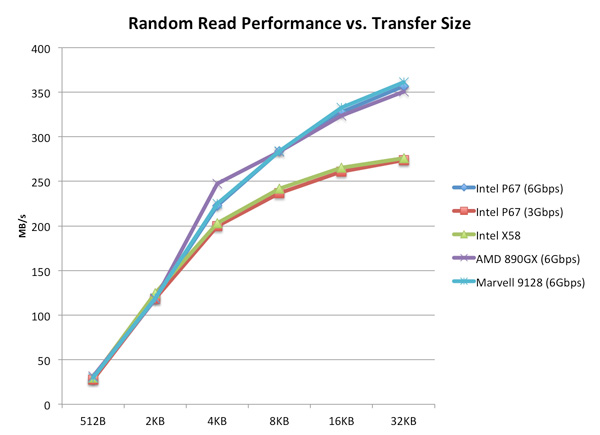
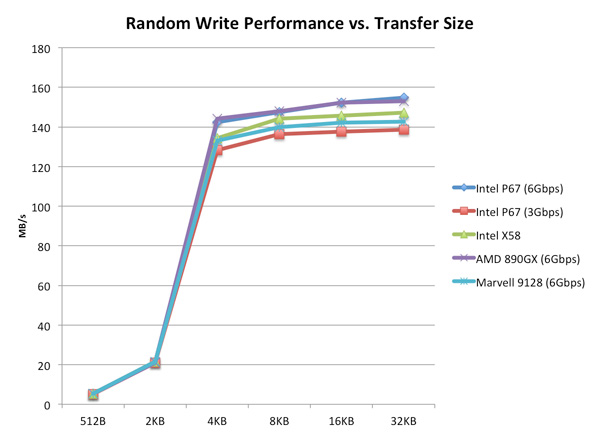
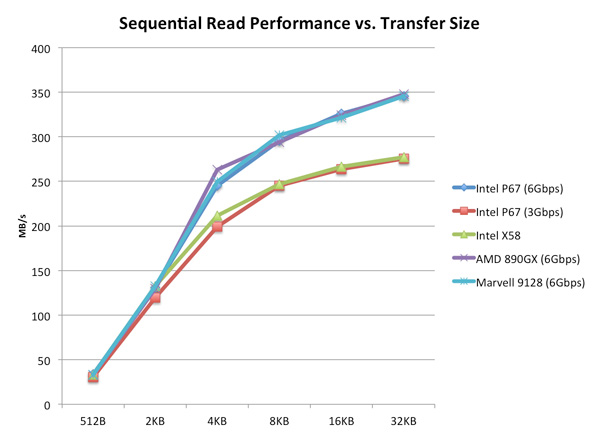
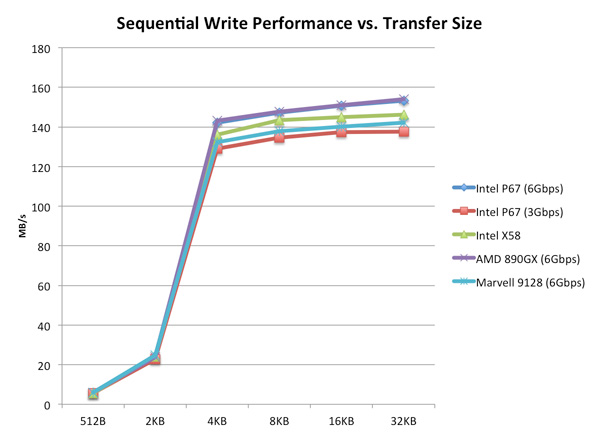
Among Intel chipsets I found that the X58 has stellar 3Gbps SATA performance, which is why I standardize on it for my SSD testbed. Even compared to the new 6-series platform there are slight advantages at high queue depths to the X58 vs. Intel’s latest chipsets.
Looking at 6Gbps performance though there’s no comparison, the X58 is dated in this respect. Thankfully all of the contenders do well in our 6Gbps tests. AMD’s 8-series platform is a bit faster at certain block sizes but for the most part it, Intel’s 6-series and Marvell’s 91xx controllers perform identically.
I hate to be a bore but when it comes to SATA controllers an uneventful experience is probably the best you can hope for.


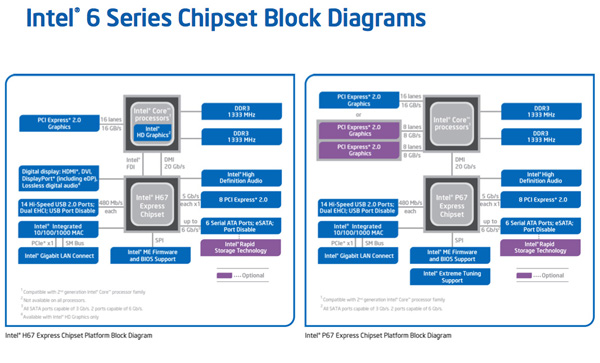








283 Comments
View All Comments
samrty22331 - Wednesday, June 1, 2011 - link
visual studio 2010 professional not supported intel i5 2500kso
can you say
how to install vs 2010 in this
Okurka - Saturday, August 13, 2011 - link
The base clock of the HD 3000 GPU is 1100 MHz, not 850 MHz.That makes the 1550 MHz an overclock of 40,9 %, not 82,4 % as stated in the article.
khalnayak - Sunday, January 22, 2012 - link
I am having Intel HD 3000 - Sandy Bridge in my system and i was willing to get the game called "oil rush" but then i have found weird response for the game here http://www.futurehardware.com/pc-gaming/288.htm , so i just wanted to know is there any one who have tested the Intel HD 3000 - Sandy Bridge for oil rush, any help for this will be highly appreciated.thr0nez101 - Sunday, January 29, 2012 - link
I've got intel hd graphics 3000 and according to this forum/review it has a prob running dawn of war 2 on low graphics... i have it set to max graphics and i runs a dream... same with a lot of games i play on it...oliverr - Saturday, February 11, 2012 - link
guys, is it safe to overclock the Intel HD 3000 GPU ? I own a 2500K CPU. I can overclock the GPU to 1450mhz and it looks stable . But i dont know how to read the temperature from the GPU unit, so iam afraid i could burn my GPU/CPU .cerberaspeed12 - Thursday, February 16, 2012 - link
hi.first off all sorry for my english.I have a doubt .I have seen the dells lap top.they are identical but one have the Intel Core i3-2350M 2.3GHz ,the odher is Intel Core i5-2450M 2.5GHz , and the third have Intel Core i7 -2670M 2.4GH
the prices is 600 $,670$ and 800 $,I am working some live multi channel audio production and .net teh programing.So for wich one i soud go.Thanks
indyaah - Tuesday, February 21, 2012 - link
any suggestions how can i??weirdo2989 - Sunday, March 4, 2012 - link
Hi Techies,I recently got this processor. It is ultimate for gaming.
However in my windows CPU meter gadget, i can see only 2 cores functioning. Stock comes with unlocked multiplier afaik. But here in my system, it shows only 2 cores. Is there any way to activate all the cores for better performance?
Any suggestions/tips would be highly appreciated.
Thanks.
Regards,
Parth
0121birmingham - Saturday, May 12, 2012 - link
Just to say i wrote a small post on this issue at http://intel23976fpsproblem.blogspot.co.uk/It does not look like the problem has been fixed in the new z77 line up. DAM
milutzuk - Saturday, July 14, 2012 - link
Beside VS2008 compiler performance I would like to see growing a database with some Java compiler performance, either under NetBeans or Eclipse. Thank you.